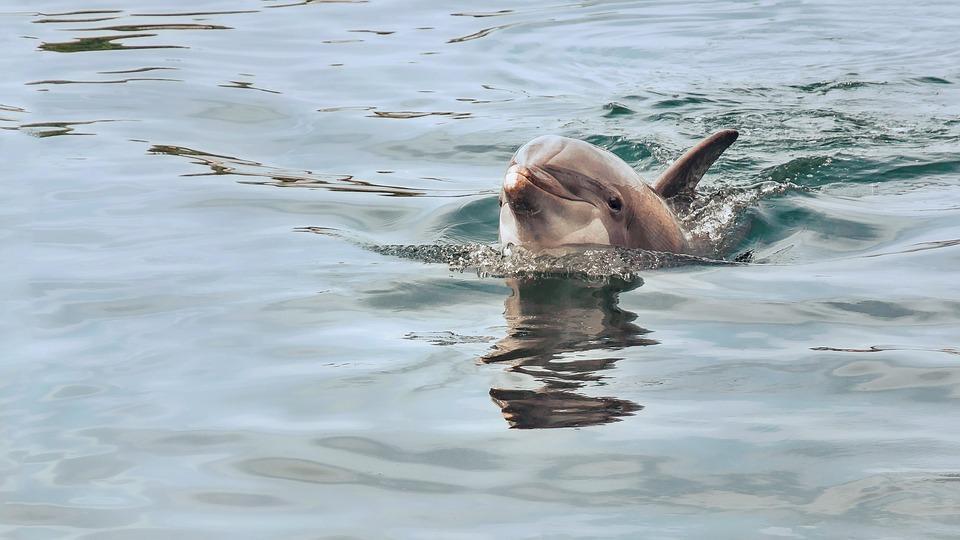Aquatic mammals List - Characteristics And Examples


Did you know that all living beings have origins which are linked to our aquatic environment? Throughout evolutionary history, mammals have been changing and adapting to conditions on the earth’s surface. This is until, several million years ago, some of these animals returned to submerge themselves in oceans and rivers: adapting to life under these specific conditions.
In this AnimalWised article, we will be discussing and exploring an extensive list of marine mammals. If you want to know more about these aquatic mammals, discover their characteristics and some examples here with us!
Characteristics of aquatic mammals
The life of marine mammals is very different from that of terrestrial mammals. In order to survive in this environment, these animals have acquired special characteristics during their evolution.
Water is a much denser medium than air and, in addition, it offers greater resistance. This means that aquatic mammals have developed extremely aerodynamic bodies that allow them to unwind easily. Developing fins similar to those of fish has been a predominantly significant morphological change. It allows these animals to: increase speed, direct swimming and communicate.
Water is a medium that absorbs much more heat than air, therefore, aquatic mammals have a thick layer of fat under their hard and robust skin. Also, it serves as warmth and protection when they live in specifically cold areas. Some marine mammals come into more contact with air, because certain vital functions take them out of the water, such as reproduction.
Those marine mammals that, at certain periods of their lives, have inhabited the great depths, have developed other organs which give them the ability to be able to live in darkness. Such abilities include incredible senses; such as, sonar and echolocation. Some senses, however, such as sight are not useful in these ecosystems. This is because sunlight does not reach such depth.
Like all mammals, these aquatic animals have: mammary glands that produce milk for their offspring, sweat glands and they gestate their offspring inside of their bodies.

How do marine mammals breathe?
Aquatic mammals need air to breathe. Therefore, they take large amounts of air and keep it inside of their lungs for long periods of time. Once they submerge after taking air, they are able to redirect blood to the brain, heart and their skeletal muscle. Their muscles hold a high concentration of a protein called myoglobin, which can accumulate large amounts of oxygen.
In this way, aquatic animals are able to remain underwater for considerable periods of time without breathing in air. Young and newborn marine mammals take a while to developed this capacity, therefore, they need to breaths more often than developed mammals.
Types of aquatic mammals
Most species of aquatic mammals live in the marine environment. There are three orders of aquatic mammals, which include: cetacea, carnivora and sirenia.
Cetacea order
The most representative species within the cetacea order are: whales, dolphins, sperm whales, killer whales and porpoises. The cetaceans evolved from a species of ungulate terrestrial carnivores more than 50 million years ago. The cetacea order is divided into three suborders (one of them extinct):
- Archaeoceti: terrestrial quadruped animals: predecessors of current (extinct) cetaceans.
- Mysticeti: the baleen whale. They are carnivorous animals without teeth that take large puffs of water. They then filter it through their baleens (filter-feeder system) and catch the trapped fish with their tongues.
- Odontoceti: this includes dolphins, killer whales, porpoises, sperm whales and beaked whales. This group is very diverse, its main charcateristic being that they all have teeth. In this group we also find the Amazon river dolphin (Inia geoffrensis), a species of aquatic river mammal.
Carnivorous order
In the carnivora order, we include: seals, sea lions and walruses, sea otters and polar bears. This group of animals appeared about 15 million years ago and it is believed that they are closely related to mustelids and ursidae (bears).
Sirenia order
The last order, sirenia, includes: dugongs and manatees. These animals have evolved from the tethytheria clade, animals very similar to the elephants that appeared about 66 million years ago. Dugongs inhabit Australia, the Red Sea and Indian Ocean and, manatees, Africa and America.

List of aquatic mammals
Order cetacea
Mysticeti:
- Bowhead whale (Balaena mysticetus)
- Southern Right Whale (Eubalaena australis)
- North Atlantic Right whale (Eubalaena glacialis)
- North Pacific Right Whale (Eubalaena japonica)
- Fin whale (Balaenoptera physalus)
- Sei whale (Balaenoptera borealis)
- Bryde's whale (Balaenoptera brydei)
- Great blue whale or blue whale (Balaenoptera musculus)
- Common minke whale (Balaenoptera acutorostrata)
- Antarctic minke whale (Balaenoptera bonaerensis)
- Omura’s whale (Balaenoptera omurai)
- Humpback whale (Megaptera novaeangliae)
- Gray whale (Eschrichtius robustus)
- Pygmy rightWhale (Caperea marginata)
Odontoceti:
- Commerson’s dolphin (Cephalorhynchus commersonii)
- Heaviside’s dolphin (Cephalorhynchus heavisidii)
- Long-beaked dolphin (Delphinus capensis)
- Pygmy killer whale (Feresa attenuata)
- Long-finned pilot whale (Globicephala melas)
- Risso's dolphin (Grampus griseus)
- Fraser's dolphin (Lagenodelphis hosei)
- Atlantic white-sided dolphin (Lagenorhynchus acutus)
- Northern right whale dolphin (Lissodelphis borealis)
- Common Orca or Killer whale (Orcinus orca)
- Indo-Pacific humpbacked dolphin (Sousa chinensis)
- Striped dolphin (Stenella coeruleoalba)
- Common bottlenose dolphin (Tursiops truncatus)
- Amazon river dolphin (Inia geoffrensis)
- Baiji dolphin (Lipotes vexillifer)
- La Plata dolphin (Pontoporia blainvillei)
- Beluga whale (Delphinapterus leucas)
- Narwhal (Monodon monoceros)
Carnivorous order
- Mediterranean Monk Seal (Monachus monachus)
- Northern elephant seal (Mirounga angustirostris)
- Leopard seal (Hydrurga leptonyx)
- Harbor seal (Phoca vitulina)
- Brown fur seal (Arctocephalus pusillus)
- Guadalupe fur seal (Arctocephalus philippii townsendi)
- Steller sea lion (Eumetopias jubatus)
- California sea lion (Zalophus californianus)
- Sea otter (Enhydra lutris)
- Polar bear (Ursus maritimus)
Sirenia order
- Dugongo (Dugong dugon)
- West India manatee (Trichechus manatus)
- Amazonian manatee (Trichechus inunguis)
- African manatee (Trichechus senegalensis)
If you want to read similar articles to Aquatic mammals List - Characteristics And Examples, we recommend you visit our Facts about the animal kingdom category.
https://basicbiology.net/animal/mammals/marine
Irving, L. 1973. Comparative Physiology of Thermoregulation. ACADEMIC PRESS, INC. 2: 47 – 96.
Kramer, D. L. 1988. The behavioral ecology of air breathing by aquatic animals. Canadian Journal of Zoology, 66 (1): 89 – 94.







